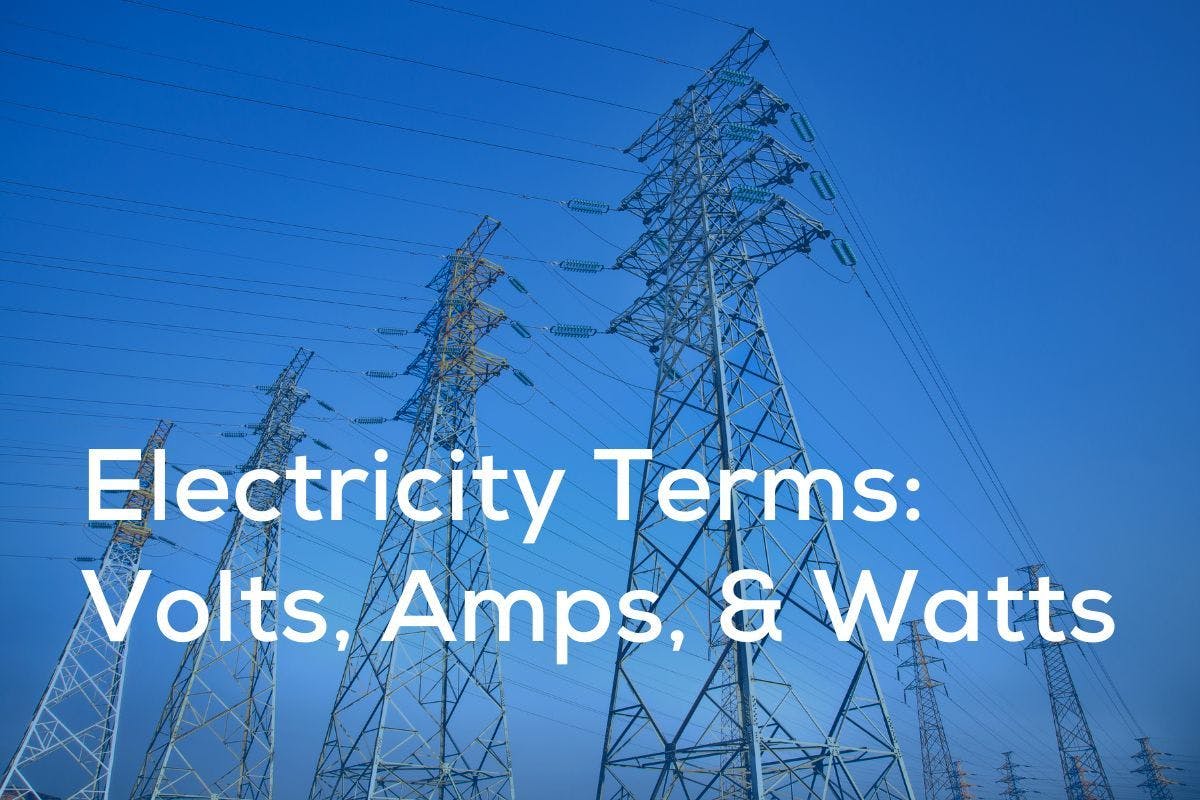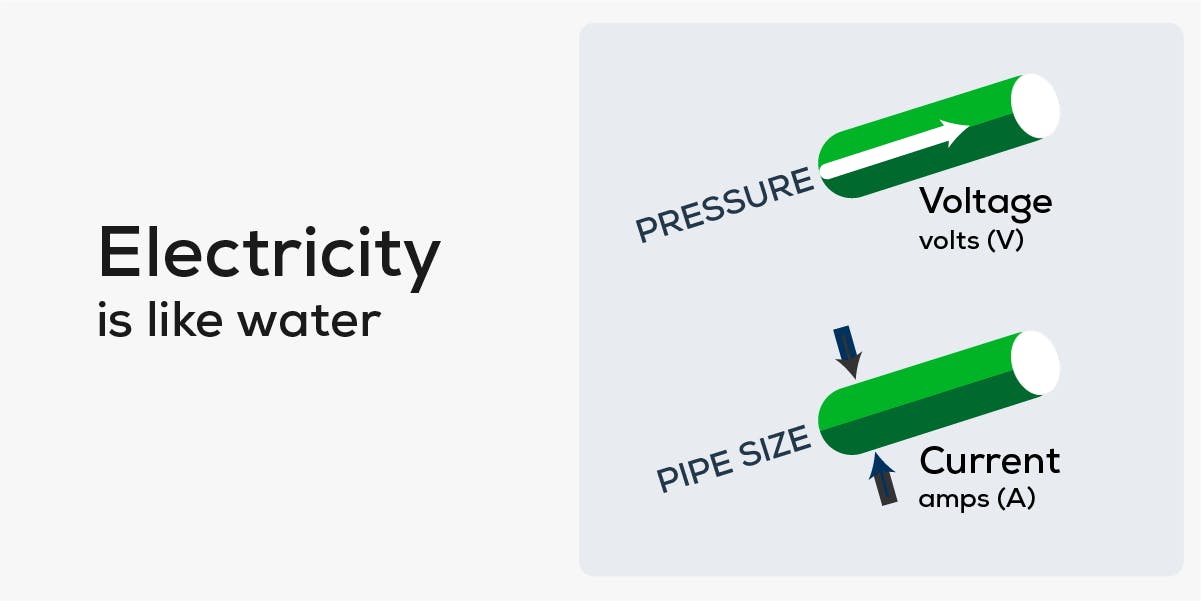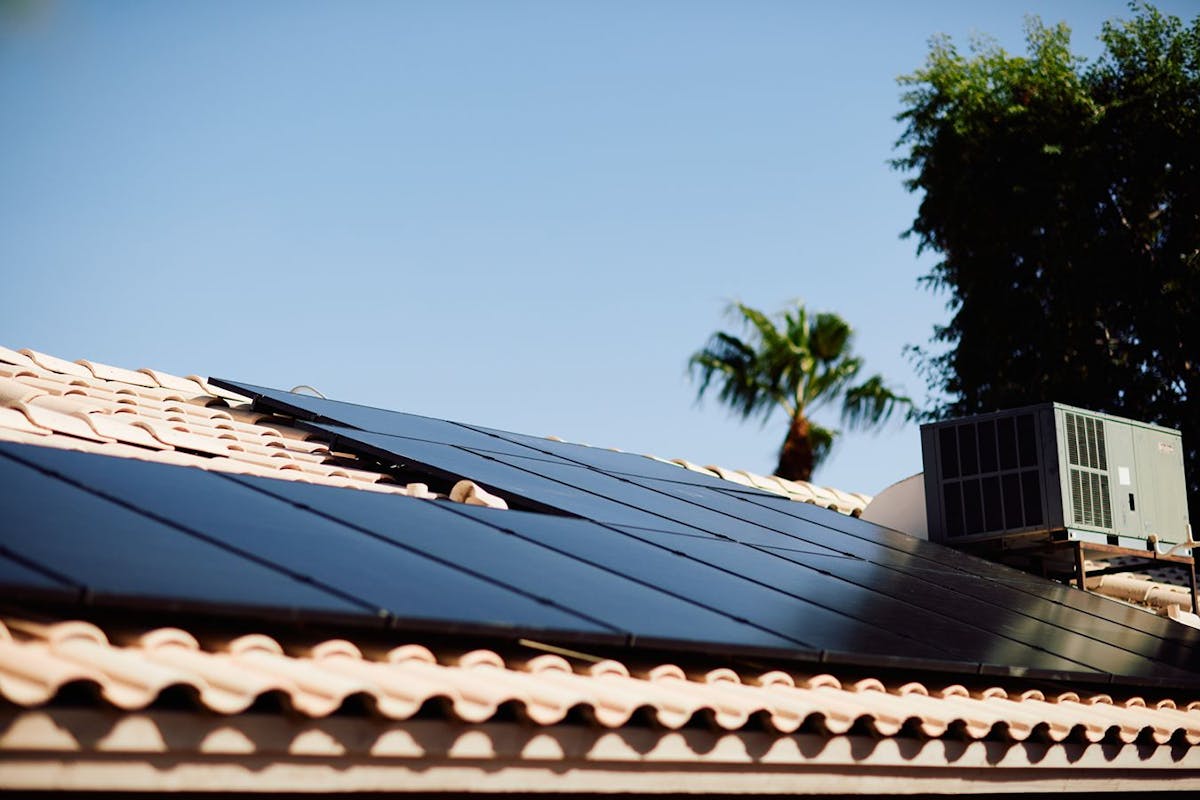Solar Power and Home Electrification Electricity Terms: Volts, Amps, and Watts
Last edited

Author
Andrew Blok
Electrification and Solar Writer and Editor

Editor
Ryan Barnett
SVP, Policy & New Market Development

There’s a reason electricians are specially trained. Their work is technical, and mistakes can be dangerous. But a baseline knowledge can help you understand the work they do and why it’s necessary. It can also be helpful in your quest to save energy and money.
Here’s what you need to know about electricity terms and concepts like volts, watts, and amps so you can understand your home solar panels, home energy storage, or home electrification project.
See how much you can save by going solar with Palmetto
Electricity Is Like Water
It can help to think of electricity like water flowing through a hose. You can adjust how much water comes out of the hose by opening the tap more and increasing the pressure, attaching a wider hose, or adding obstacles like a mesh filter.
In our analogy, water represents electricity, and the hose represents the wires that transmit it. The flow of water is the electric current, the water pressure is like voltage, a pipe's narrowness or blockages are like resistance, and the flow rate times the water pressure is like power.

What Is a Volt?
A volt measures the force that pushes electric charges through a conductor, such as a wire. (Specifically, it’s the variation in electric charge between two points.) Higher voltage indicates a stronger push for the current.
We can adjust the formula from above to solve for volts.
Volts = Watts / Amps
Volt is the International System of Units (SI) term used to measure voltage. Volts can be abbreviated to the letter V; 4V means four volts.
Outlets are standardized by voltage. The standard residential outlet in the US is 120V, though outlets for dryers, induction stoves, and other energy-hungry devices are 240V.
Think of volts as water pressure. Increasing the water pressure can force more water out of a pipe. Increasing voltage can force more electricity through a circuit.
What Is an Amp?
Amperage measures the flow of electrical current. One amp, or ampere, is equivalent to “the steady current produced by one volt applied across a resistance of one ohm,” according to Merriam-Webster. Put more simply, amperage tells you how much electricity is flowing through a wire.
Amps are abbreviated with the letter “A,” so 3A indicates three amps.
What Is a Watt?
Watts are units of power. You might still be familiar with the old 60-watt lightbulb, which took 60 watts to light up. Higher wattage lights, which took more electricity to power, burned brighter.
When one amp of current flows with a pressure of one volt, it creates one watt of power. So, watts are the result of multiplying volts and amps.
Watts = Volts x Amps
We use watts to measure the amount of power an appliance needs to function (just like the lightbulbs) or the amount of power solar panels produce.
See how much you can save by going solar with Palmetto
What Is the Difference Between Watts, Kilowatts, and Kilowatt-hours?
The difference between a watt and a kilowatt is simply size. A kilowatt is 1,000 watts. You can make this same simple conversion for larger units, too. A megawatt is 1,000 kilowatts. A gigawatt is 1,000 megawatts. A terawatt is 1,000 gigawatts.
A kilowatt and a kilowatt-hour measure different things entirely: power and energy. A kilowatt measures an amount of electricity at a given instant. An air conditioner might demand one kilowatt to run.
A kilowatt-hour measures consumption. An air conditioner that draws one kilowatt of electricity for an hour has consumed one kilowatt-hour. If a smaller device required half of a kilowatt to run and did so for an hour, it would consume half a kilowatt-hour. It would have to run for two hours to consume one kilowatt-hour.
Some electric utilities offer billing plans that have a demand component (e.g. part of your rate might be determined by your highest demand in the billing period). In that case, demand would be measured in kilowatts, while your total electricity consumption would be measured in kilowatt-hours.
What Is an Ohm?
Ohms are a measure of resistance, which you can think of as electrical friction. The higher the resistance, the harder it is for electricity to flow through a material, just like it’s harder for water to flow through a pipe with a screen on the end.
Ohms are abbreviated using the Greek letter omega. You likely won’t come across ohms in your day-to-day life.
What Is the Difference Between Energy and Power?
Power measures capacity while energy measures what was delivered. When it comes to our hose from before, think of power as the amount of water being delivered at any given moment. Think of energy as the total water delivered over time.
When it comes to electricity, power is measured in watts, and energy is measured in watt-hours.
Take Control of How Your Home Uses Electricity
You don’t need to be an expert in electrical terms to put electricity to work for you. Home solar panels could unlock decades of energy savings and let you take some control back from your utility. A home battery can make your home more resilient during a blackout. Some home electrification projects can save you money and make your home more comfortable and convenient.
To find out how home energy changes could benefit you, estimate your solar savings for free or explore the upgrades available to you.
See what solar can do for you:
Frequently Asked Questions
What’s the difference between volts, amps, and watts?
Each measures a different aspect of the flow of electricity. Volts measure the pressure of an electrical charge, and amps measure the current. Watts measures power. You calculate watts by multiplying amps and volts.
How can you calculate watts from volts and amps?
Simply multiply volts and amps to get watts.
What does it mean if a solar panel is 400 watts?
A 400-watt solar panel has a production capacity of 400 watts under standard testing conditions. If it produced at that capacity for one hour, it would produce 400 watt-hours. If it did so for two and a half hours, it would have generated one kilowatt-hour.


